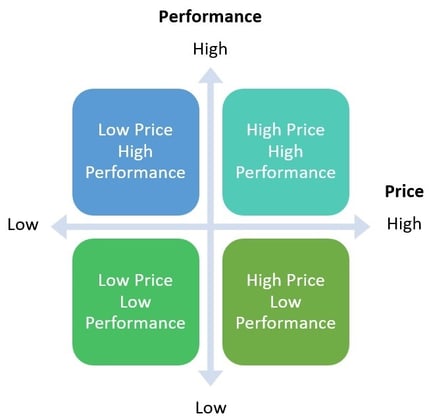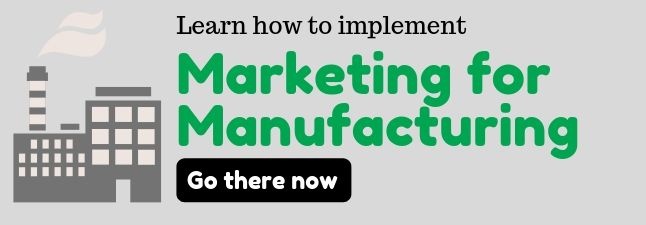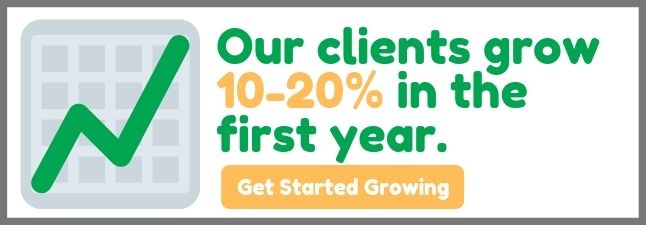Posted by Todd Hockenberry ● Jun 19, 2019
7 Ideas to Drive Targeted Lead Generation For Manufacturers
Targeted lead generation for manufacturers does not have to be expensive or time-consuming, but it does take some thinking and some work. Here are seven proven ways to drive the leads you need to grow your business.
1. Know your positioning and differentiation - they are not the same thing
 No matter how great your marketing, sales, and other lead generation tactics are, they are doomed to mediocrity and ultimately failure if you don't understand and develop positioning and differentiation. These seem like elementary ideas to many, I am sure, but judging by the people reaching out to me to convert me to a lead, not many seem to understand these ideas.
No matter how great your marketing, sales, and other lead generation tactics are, they are doomed to mediocrity and ultimately failure if you don't understand and develop positioning and differentiation. These seem like elementary ideas to many, I am sure, but judging by the people reaching out to me to convert me to a lead, not many seem to understand these ideas.
The same lack of understanding exists with many of the clients I work with in the manufacturing world. How many of you still try to sell features, technology, or vague generalities like great customer service, best quality, and endless lists of features?
Positioning is defined as the decisions and actions that create and maintain the concept of your product in the customer’s mind.
A simple exercise to show positioning is to draw a four box + and plot the performance of your product on the y-axis, high at the top to low on the bottom, and the price of your product on the x-axis, with low on the left and high on the right.

Pick a car company, mobile phone provider, or restaurants (to name but a few examples) to see how brands you see everyday position themselves.
For example:
Low price, high performance - Kia
Low price, low performance - Fiat
High price, high performance - BMW
High price, low performance - Jeep
You may argue with my choices but you get the point.
Your marketing and sales efforts certainly influence positioning, but as you should see from the exercise, they do not control it. The perception in the customer's mind is the key to positioning.
Differentiation is defined as your ability to separate from the competition and possible alternatives. Differentiation is an ACTIVE process that marketing and salespeople build, and is unique for each customer.
Differentiation is the key to competitive advantage.
If you are not able to communicate a clear reason why someone should convert on an offer online or talk to you on the phone or respond to an email or respond to any other lead generation method, then they won't. Lead generation is much more dependent on your ability to create differentiation and interest than on the type of tactic you choose.
Understanding, knowing, and using effective positioning and differentiation is reflected in your outreach strategy and in your messaging and will result in more engagement and interest, which is what drives lead generation.
2. LinkedIn
If direct outreach and content sharing is not a part of your lead generation strategy, then it needs to be.
People open direct messages at a much higher rate on LinkedIn than through email. One key decision-maker I know told me recently that email is dead to him and that the only way to get his attention is LinkedIn messaging. That got my attention.
Share interesting content on your feed and tag prospects, partners, and other salespeople in your company. Learn what drives engagement as measured by likes, shares, and comments and do more of it. Commit to being active on LinkedIn, and you will see results in terms of lead generation.
Check out this book by my friend Wayne Breitbarth. I thought I knew a lot about LinkedIn, and then I met Wayne. He is THE expert on all things LinkedIn, and you should read this book.
3. Your website
The vast majority of people on your website never convert and become a lead. Maybe 3% convert to become a lead on a typical manufacturing company's website.
What happens to the other 97%?
If you are like most manufacturing companies, absolutely nothing happens with them.
Check out Lead Forensics. This tool tracks the IP addresses of the people on your site and can tell you the companies that are on your website. You are then connected to a database of the contacts at that location that you can narrow down by key titles and departments. Not a perfect connection to the person on the site but a lot better than smiling and dialing a giant list of contacts.
4. CRM
What was the last interaction any known prospect or existing customer had with your business online, your website, content, emails, or social media?
Do you know? Do you have the tools to know?
A good CRM (we like HubSpot's) creates a centralized view of your customer, allowing you to answer those questions. You should use that information to create a customer experience that drives lead generation.
Add value to the people that are engaged. Call them. Send them helpful information. Tell them a story of how you helped someone else just like them. Show them that you are creating value in the sales process as a salesperson. Show them that doing business with you personally will be different than it is with the rest of the salespeople they deal with.
5. Call your customers
The best source for more business is always your existing customers.
Has a customer ever said to you 'I didn't know you guys did that, we just bought that from one of your competitors'?
Pretty simple idea, but I am constantly surprised that so few companies do this basic relationship tactic on a regular basis.
Understand how to help your customers and call them and ask them if they need that help.
Help first, and the sales will follow.
6. Ask for referrals from your customers
Those that don't ask for referrals don't get referrals.
Build a process, tell your customers precisely who you want to meet, be specific, and make it easy for them to give you the referral.
Have a plan, know how to ask, and why you deserve a referral. Remind them of the value you bring to them since they are a customer - you know what that value is, right?
You need to educate your customers about your ideal prospect. Tell them in a memorable way who your target persona is. Ours is Walt. Named after Walter White of Breaking Bad fame. When I tell people who Walt is, they remember. And when they run into a Walt, guess what they remember? My description of our persona, making it easy to make the connection and the referral.
Make it easy for them to refer you. Write an email for them, so it is cut-n-paste easy for them to tell someone they know about you. Write a great case study that they can share.
And then ask them to refer you. If you are delivering value for them, they will be happy to make an introduction. Not only because they want to help you (the reciprocation principle) but because it makes them look smart (see how smart I was to buy from these guys, they solved our problems).
7. Create some damn content already
If one of your targeted long tail keyword topics is "air cooled 20-watt fiber laser" think of all of the topics related to air-cooled 20-watt fiber lasers. Then create interesting (seriously, it has to be interesting) how to articles, webinars, buying guides, checklists, success stories, explainer videos, or best practice blog posts.
If you know the long tail keywords your ideal prospects search (you do know them, don't you?) you should think of them as content guides. Answer their questions. That is what a Google search really is, a question. Figure out the questions, create content that gives them the answer.
Use this content on your website, of course, but most of all, use it to power your outreach to target prospects. You are not that interesting. Content that helps, educates, and informs is pretty interesting to the leads you want to attract.
Bonus: call all of your old quotes/proposals that you lost
About a week after being promoted to my first VP Sales job, my boss walked into my office and asked how the week was going. I said, "Great; we have done seven quotes so far this week." He answered, "Son, we don't sell quotes here."
Like the large number of trade show leads that are never called, a quote that withers away into inaction is a waste of everyone's resources. You should be doing fewer quotes because you target an ideal personas. Knowing who you help the most leads to better qualifying.
You then use the quote to confirm what has already been agreed upon.
Read that sentence again. I'll wait.
Do not send a quote unless you already have a conceptual agreement. "But we need to tell them the price in the quote," you say. No, you actually should discuss value and establish outcomes and expectations first and then match that to the investment the buyer needs to make to get that return. These conversations should happen before the quote goes out. If not, you are price selling no matter how much you say you are being consultative.
If you just specify the project and send a quote for your product, you are price selling. Period. If you agree on the value and then use that value agreement to place your product in the proper context and THEN you send the quote to confirm the agreement, then you are selling value.
No one wins them all so go back and re-position the quote you lost to competitors, or more likely to inaction, and show them what you learned since you did the last quote and have a real value conversation. That conversation is the best lead generation technique there is!
None of these ideas have to cost much money - to drive targeted lead generation for manufacturers all it takes is effort, focus, and attention.
Hungry for more marketing manufacturing? Dig deeper here.
Topics: Manufacturing






